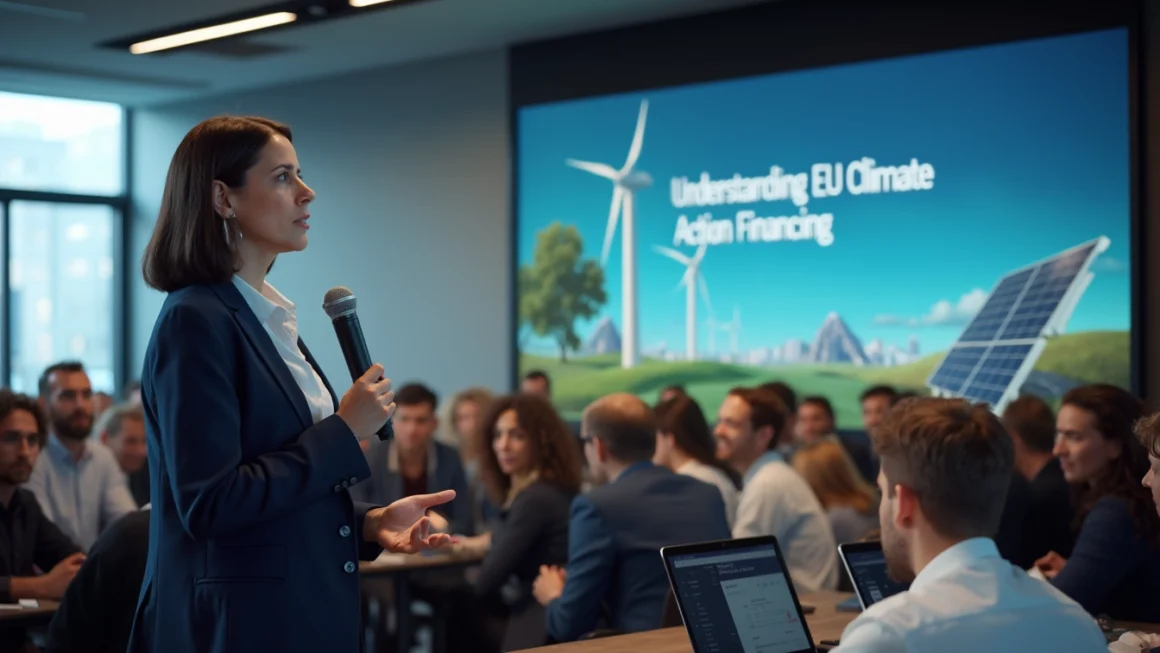Understanding EU Climate Action Financing
Table of Contents
In recent years, the European Union (EU) has taken significant strides towards achieving its climate goals, emphasizing the importance of making finance flows consistent with climate objectives. With climate change being one of the most pressing issues of our time, how is the EU steering financial resources towards sustainable development?
The Need for Climate-Friendly Financial Flows
The EU’s commitment to climate action requires a substantial reallocation of financial resources. This reallocation is necessary not only to mitigate climate impacts but also to transition towards a sustainable, low-carbon economy. Ensuring that financial flows align with climate objectives involves integrating sustainability into financial decision-making processes across the board.
Why Aligning Finance with Climate Goals Matters
- Environmental Protection: By directing funds towards green projects, the EU is fostering initiatives that protect ecosystems and promote biodiversity.
- Economic Growth: Investment in sustainable technologies and infrastructures can drive economic opportunities and create new jobs.
- Global Leadership: As a leader in climate action, the EU’s approach sets a benchmark for other regions aiming to tackle climate change.
The EU’s Strategic Approach to Climate Financing
The EU has devised several strategies to ensure that finance flows align with its climate goals. These strategies are centered on creating enabling environments for sustainable investments and fostering partnerships with various stakeholders.
Key Initiatives and Tools
Several initiatives and tools have been introduced to foster climate-aligned finance:
- EU Taxonomy for Sustainable Activities: A classification system that helps identify which investments are environmentally sustainable, enabling investors to make informed decisions.
- Green Finance Strategy: Encouraging financial institutions to integrate climate risks into their management practices, ensuring resilience against climate impacts.
- Innovative Funding Mechanisms: Programmes such as green bonds and climate funds aim to channel private and public investments into climate-friendly projects.
Challenges in Achieving Consistent Finance Flows
Despite significant progress, several challenges remain in aligning finance flows with climate goals. Addressing these challenges requires collaborative efforts between governments, financial institutions, and private investors.
Obstacles to Overcome
- Regulatory Barriers: Inconsistent regulations across member states can deter investments in sustainable projects.
- Lack of Awareness: Some investors are still uninformed about the potential returns and benefits of investing in green projects.
- Data Availability: Limited access to reliable data on sustainability metrics can hinder transparency and accountability in finance.
The Future of Climate Finance in the EU
Looking ahead, the EU aims to strengthen its climate finance framework by building on its current strategies and overcoming existing challenges. By doing so, the EU can enhance its resilience against climate change while promoting sustainable economic growth.
Automation and technological advancements are poised to play a pivotal role in streamlining sustainable finance processes. As the EU continues to innovate, leveraging platforms that facilitate process improvement and automation can be beneficial, highlighting the importance of adapting to digital solutions in financial sectors.
For those looking to streamline processes in their businesses, consider utilizing automation tools that integrate seamlessly with your existing workflows. Learn more about these innovative solutions at Make Automation.
Conclusion: A Collaborative Effort Towards Sustainability
The EU’s commitment to making finance flows consistent with climate goals is a testament to its dedication to sustainable development. Through strategic initiatives and collaborations, the EU is paving the way for a greener future. However, achieving these goals requires the collective effort of all stakeholders involved. As individuals, businesses, and governments align their financial decisions with sustainability principles, we move closer to a future where economic success and environmental stewardship coexist harmoniously.
Engage with climate initiatives and become a part of the solution to global climate challenges. Explore how your financial decisions can contribute to a sustainable future today.




